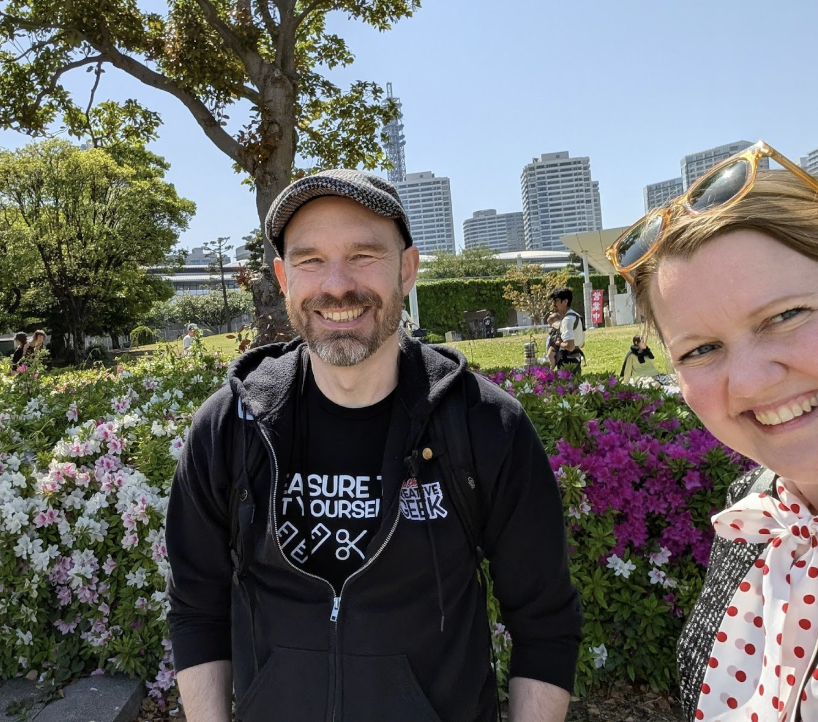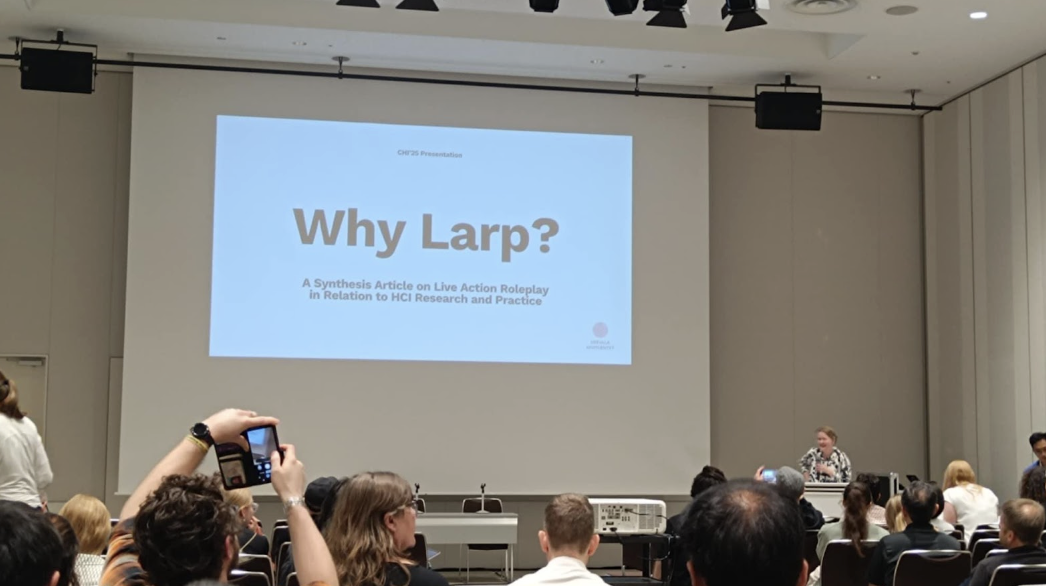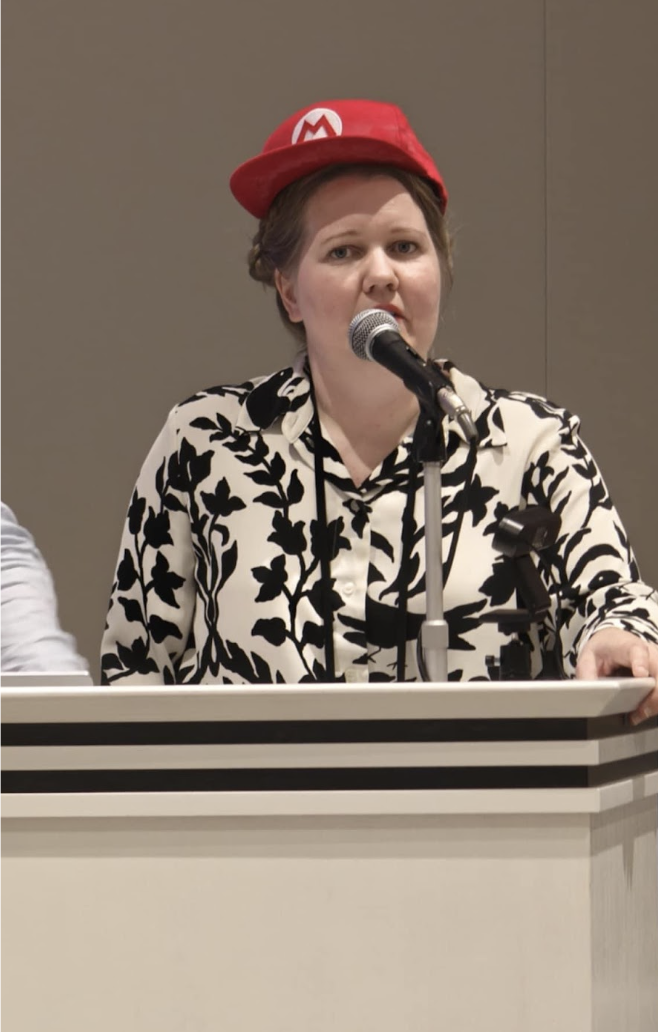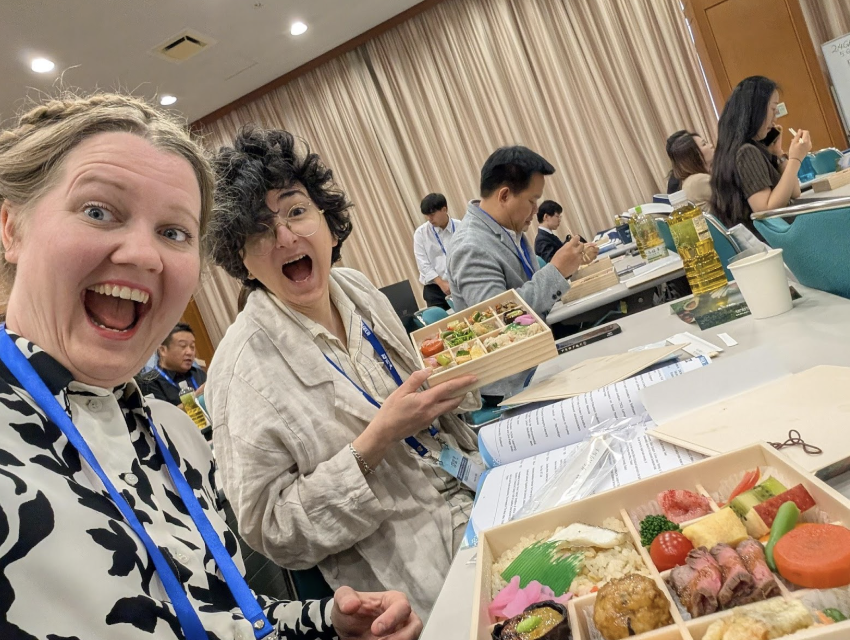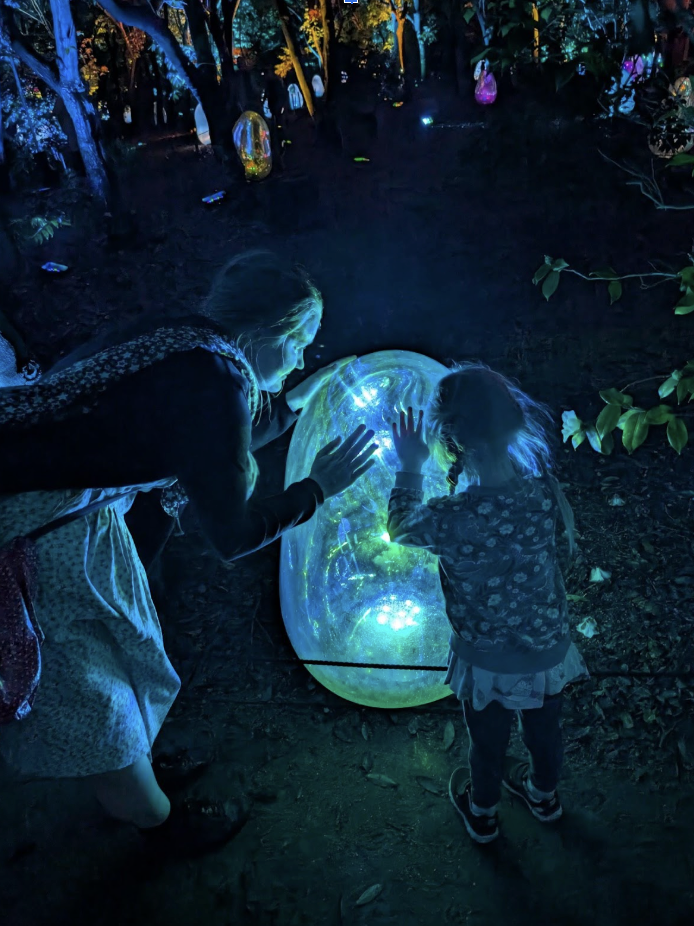Blog 5: Larpocracy goes to Japan!
A blog entry by Karin J from Uppsala University.
Amidst cherry blossoms, vending machines, hot springs, and skyscrapers, members of the Larpocracy team travelled to Japan to attend two research conferences. The main event was the CHI conference, the world's most prominent Human-Computer Interaction conference, which lasted a week and drew over 5,000 participants to one of Japan's largest conference centres. It was a buzzing experience with intense knowledge sharing, forming of new collaborations and friendships, and advancing the research field, accompanied by additional picnics, sushi, robot dinosaurs, technology-enhanced hats, AI karaoke, and more.
The story of why Larpocracy members went to Japan
To frame the participation at CHI 2025 in Yokohama, we have to go way back to 2019. That is when an intense academic conversation on larp in Human-Computer Interaction really took off. Back then, an international group of larp researchers, including some of our now stars in the Larpocracy team, got together to host a workshop on larp as a design method at the DIS'19 conference.
This generated considerable interest, and three years later, in 2023, it was transformed into the first-ever larp workshop at a CHI conference. Those workshops were not just discussions, but also actual larping and co-creating larp ideas together. The conversation and creativity continued. A writing team was formed to bring together and synthesise knowledge on larp as a method of Human-Computer Interaction. The writing team, among others, included Karin Johansson, Sarah Lynne Bowman, Jon Back, and Annika Waern, who, during this process, also secured funding for the Larpocracy project. After over a year of writing the article, with a team of 8 authors spanning 4 different countries, the 35-page paper was accepted by the prominent research journal TOCHI. This opened up the opportunity to present the article at the CHI conference in 2025, bringing us back to our researchers among the cherry blossoms!
Embracing the craziness of CHI'25 in Japan, Jon and I went there. We listened to numerous research presentations, participated in workshops, meet-ups, receptions, and mingle parties, attended plenary sessions, and tried out interactive demos, among other activities.
I got the honour to present the larp article: Why Larp? A Synthesis Article on Live Action Roleplay in Relation to HCI Research and Practice. In a well-filled conference room, the 10-minute presentation was well-received and evoked a lot of questions. Being in Japan, focusing on larp, I couldn't resist the temptation to incorporate a light-hearted micro-larp into the presentation. Donning a Super Mario cap, I invited the audience to, just for a moment, play-pretend being Goombas, preparing a revolution in the Mushroom Kingdom. After days of listening to lengthy research presentations, this certainly brought some new energy into the room.
The talk then moved on to more serious discussions on how larp can be utilised for futuring and reimagining societies. The paper draws on years of larp research and contains a literature review of academic articles on larp, as well as a practitioner's overview of how larps around the world have engaged with technologies and imagined future societies. The paper also explores four examples of how larp and research can be combined. The paper and presentation were well received. Some buzz was also created when Larpocracy was introduced, and several people got in touch with us to learn more.
Beyond CHI, I also presented a paper on creative methods for futuring workshops at the ICIET conference (International Conference on Information and Education Technologies) in Fukuyama, the week before CHI. The paper received a Best Paper Award, with the added perk of attending an award ceremony at Fukuyama Castle. Creative workshops are also something we have worked with in Larpocracy. This spring, we designed and ran several workshops on larp and deliberation with larp designers, team members, and at larp festivals.
A general reflection on the conference experience is that our focus on larp stands out a bit in relation to mainstream research. At ICIET AI as an educational tool was dominant, and also rather simple gamified types of educational methods. Edu-larp is really something else, and neither larp nor roleplay seemed researched in relation to education technologies in any of the over 150 papers presented at the conference. So there is for sure room for Larpocracy contributions ahead! At CHI lot of focus was on AI and large language models, there is also quite some engineering research on haptics. There is a larp research community within CHI, and a notable example was a paper presented by James Fey, who was also co-author of Why Larp. The article presented an ambitious summer camp larp for middle school girls, getting them to engage with programming and wearables. The paper expands on how edu-larp contributed to collaborative skill training, co-creation and how it fostered inclusivity. Skills we in Larpocracy also want to promote through larp in relation to deliberative democracy.
CHI has a strong research focus on societal impacts of technologies; critical designs and speculative designs related to sustainability, more-than-human perspectives, gender equality, equity and decolonisation. The final keynote speaker was a 90-year-old Japanese lady, who, in front of a 5,000-person audience, talked about what it was like to be a housewife in Japan in the 1950s and how she and her friends had recently tried to empower themselves by utilising technology. She created her first app when she was over 70, and now was curious about AI. It was a very touching speech, earning a standing ovation from the entire plenary. This focus on inclusivity at CHI was also apparent in the conference itself, with features such as gender-neutral bathrooms, a safety team dedicated to combating discrimination, queer meet-ups, childcare services to support researchers who are parents, and special interest groups promoting diversity. Being at CHI, while also being part of Larpocracy, prompted me to muse about the similarities and differences between academic dialogue and democratic deliberation. And also the importance of including as many voices as possible into those conversations.
Also, while in Japan, there were online meetings and writing deadlines, but at least the ‘home office’ was stylish! While there, I also took the chance to participate in immersive and interactive experiences, such as a gigantic technology-enhanced magical forest experience, and attended the World Expo in Osaka, showcasing state-of-the-art architecture, innovations, and experiences from around the world.
A 10-minute video presenting the article Why Larp?:
The full Why larp? paper (open access):
Karin Johansson, Raquel Robinson, Jon Back, Sarah Lynne Bowman, James Fey, Elena Márquez Segura, Annika Waern, and Katherine Isbister. 2024. Why Larp? A Synthesis Article on Live Action Roleplay in Relation to HCI Research and Practice. ACM Trans. Comput.-Hum. Interact. 31, 5, Article 64 (October 2024), 35 pages. https://doi-org.ezproxy.its.uu.se/10.1145/3689045





